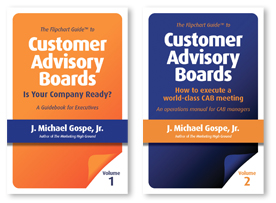A VP of products for a B2B technology company was tasked to develop the next chapter of his company’s vision and roadmap. Recognizing the importance of building a value proposition shared and commonly understood across the company, he hosted a marketing & engineering “summit” designed to be a working session to take the first step on his journey to the marketing high ground. In many companies product roadmaps represent merely a collection of feature enhancements and bug fixes. But, the intrepid VP wanted to leap frog this kind of tactical thinking. In order to be strategic, a new approach was required.
His “new approach” was actually not that revolutionary. In fact, it was really more of a back-to-basics approach that put the end-user customer, not the businesses they sold to, nor their own product or technology in the center of the universe. Before diving into the nuts and bolts of specific features, he challenged the team to test their understanding of “use case experiences” shared by potential end-user target market segments. In other words, how well did the team really know the drivers, behaviors, and expectations of these users, regardless of the technology or products they used?
As an initial exercise, the VP asked the cross-functional team to decide which market segment(s) should be prioritized. Reflecting on the company’s current offerings, the team already knew that there were 3 primary segments of end users; from this they developed personas for Carly, Anne, and Frank.
With these personas in hand, the most relevant question became: How do these end-user customers want to engage a vendor, or any vendor, to solve their specific problem? What are their expectations? The VP broke the team into three smaller groups, each one tasked to illustrate a “use case experience” relevant to their assigned persona. The results of this exercise were profound.
First, I should reiterate that these use cases did NOT actually involve his company’s products or services. This was not a use case to educate or explain how/when/where a specific product or feature would be used. Instead, these use cases focused on the end user experience, regardless of which vendor filled the need. Product use cases would be worked a bit later in his process.
What followed were lively discussions about the implications of the end-user experience as it related to their business model. In the end, the answer was clear to everyone that the end-user use case experience illustrated with Frank was just not that interesting. However, Carly and Anne offered the richest business opportunity and the most technologically engaging option. Not only that, by drilling down into the use case experience, the team began to understand the competitive differentiators and most relevant benefits required for winning these 2 audiences.
In the weeks that followed, the team honed it’s positioning strategy, built their story (using the message box technique), and then articulated a series of product use cases, highlighting how their platform and technology would outshine the competition. This became the cornerstone to a new vision pitch and a fire that ignited the passion of engineers, marketers, and sales leaders across the company.





